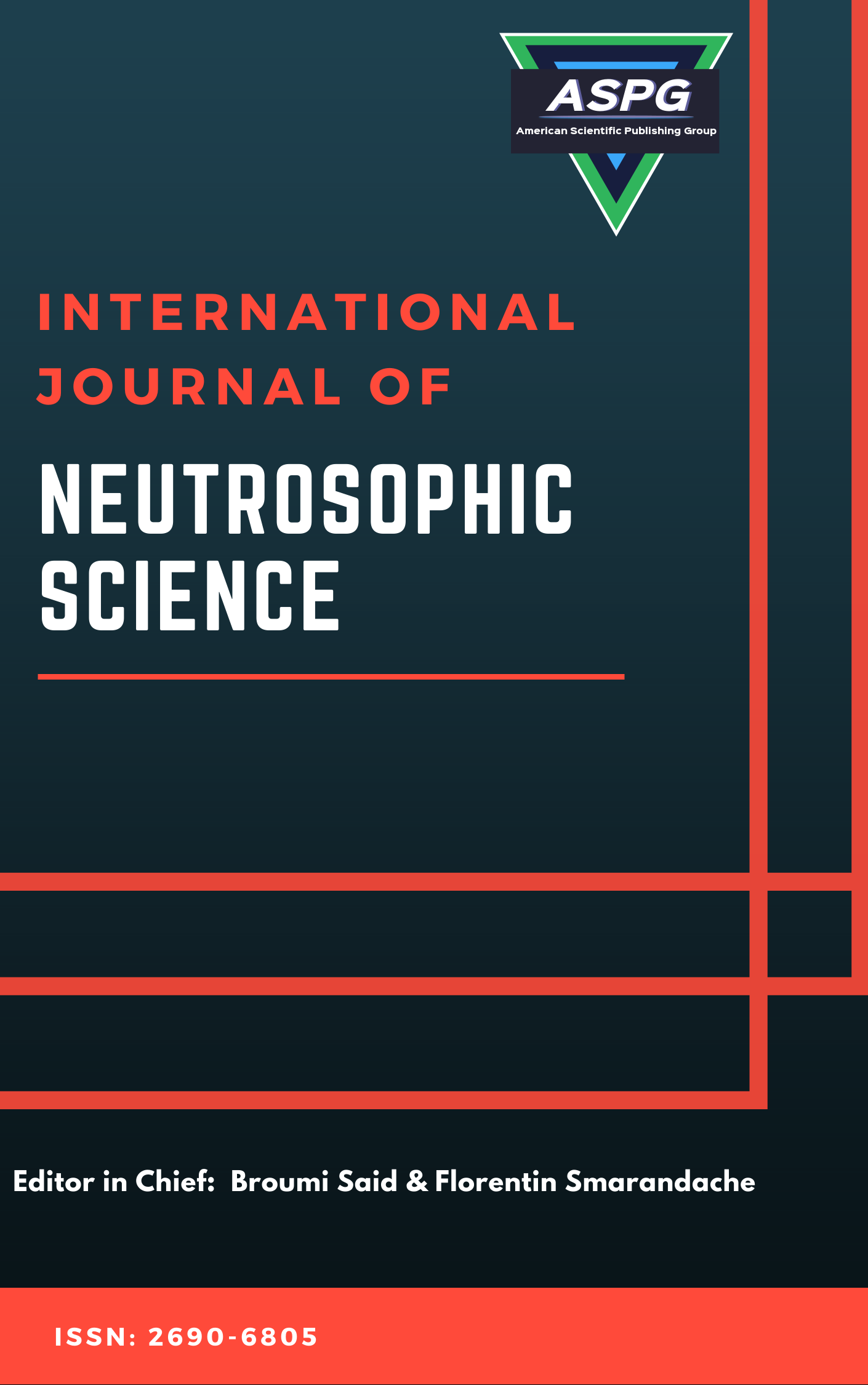

Volume 26 , Issue 3 , PP: 229-241, 2025 | Cite this article as | XML | Html | PDF | Full Length Article
John Jayaraj J. 1 , N. Jose Parvin Praveena 2 , I. Paulraj Jayasimman 3 * , Broumi said 4
Doi: https://doi.org/10.54216/IJNS.260316
This paper presents a novel approach for ranking the issues experienced by female employees across various industries using the nonagonal single-valued neutrosophic soft set framework. By leveraging an extensive database of multi-observer data, we evaluated the challenges faced by women in diverse work environments. The Neutrosophic Soft Set proved to be a robust tool for addressing decision-making complexities within the neutrosophic domain, facilitating a comprehensive understanding of these issues. We established a comparative table to categorize the identified problems, enabling effective organization based on attributes, capabilities, and outcomes. Our findings underscore the utility of advanced mathematical frameworks in analyzing gender-specific workplace challenges, providing valuable insights for developing targeted interventions. This research contributes to the ongoing discourse on gender equity in the workplace and lays the groundwork for future studies aimed at enhancing the experiences of female employees across sectors.
Nonagonal Neutrosophic soft sets , Score function , Progressive table , Issues of women , Variable sense
[1] M. Ali, L. H. Son, I. Deli, and N. D. Tien, "Bipolar neutrosophic soft sets and applications in decision making," Journal of Intelligent & Fuzzy Systems, vol. 33, no. 6, pp. 4077–4087, 2017.
[2] I. Deli, "Interval-valued neutrosophic soft sets and its decision making," International Journal of Machine Learning and Cybernetics, vol. 8, no. 2, pp. 665–676, 2017.
[3] S. Broumi, "Generalized neutrosophic soft set," International Journal of Computer Science and Engineering Information Technology, vol. 3, no. 2, pp. 1–6, 2013. [Online]. Available: https://doi.org/10.5121/ijcseit.2013.3202
[4] S. Debnath, "Single-valued neutrosophic covering-based rough set model over two universes and its application in MCDM," Neutrosophic Sets and Systems, vol. 53, no. 1, pp. 29, 2023.
[5] A. Mehmood, F. A. W. A. D. Nadeem, G. Nordo, M. Zamir, C. Park, H. Kalsoom, and M. I. Khan, "Generalized neutrosophic separation axioms in neutrosophic soft topological spaces," Neutrosophic Sets and Systems, vol. 7, no. 1, pp. 37, 2020.
[6] M. Saqlain, M. N. Jafar, and M. Riaz, "A new approach of neutrosophic soft set with generalized fuzzy TOPSIS in application of smartphone selection," Neutrosophic Sets and Systems, vol. 32, pp. 306, 2020.
[7] A. S. Richard, N. Jose Parvin Praveena, and A. Rajkumar, "Special single valued octagonal neutrosophic number and its applications using MATLAB programming," Journal of Intelligent & Fuzzy Systems, vol. 45, no. 1, pp. 687-698, 2023.
[8] P. K. Maji, "A neutrosophic soft set approach to a decision making problem," Annals of Fuzzy Mathematics and Informatics, vol. 3, no. 2, pp. 313–319, 2012.
[9] M. Irfan Ali, et al., "On some new operations in soft set theory," Computers and Mathematics with Applications, vol. 57, no. 9, pp. 1547–1553, 2009.
[10] S. Mahmood, "Dissimilarity of fuzzy soft points and its applications," Fuzzy Information and Engineering, vol. 8, pp. 281-294, Sep. 2016.
[11] A. Kandil, O. A. El-Tantawy, S. A. El-Sheikh, and S. S. El-Sayed, "Fuzzy soft connected sets in fuzzy soft topological spaces II," Journal of the Egyptian Mathematical Society, vol. 25, no. 2, pp. 171-177, 2017.
[12] P. K. Maji, "Neutrosophic soft set," Computers and Mathematics with Applications, vol. 45, pp. 555-562, 2013.
[13] Z. Pawlak, "Rough sets," International Journal of Information and Computer Sciences, vol. 11, pp. 341-356, 1982.
[14] D. A. Molodtsov, "Soft set theory—first results," Computers and Mathematics with Applications, vol. 37, pp. 19-31, 1999.
[15] M. Ganster and I. L. Reilly, "Locally closed sets and LC-continuous maps," International Journal of Mathematics and Mathematical Sciences, vol. 12, pp. 1-6, 1989.